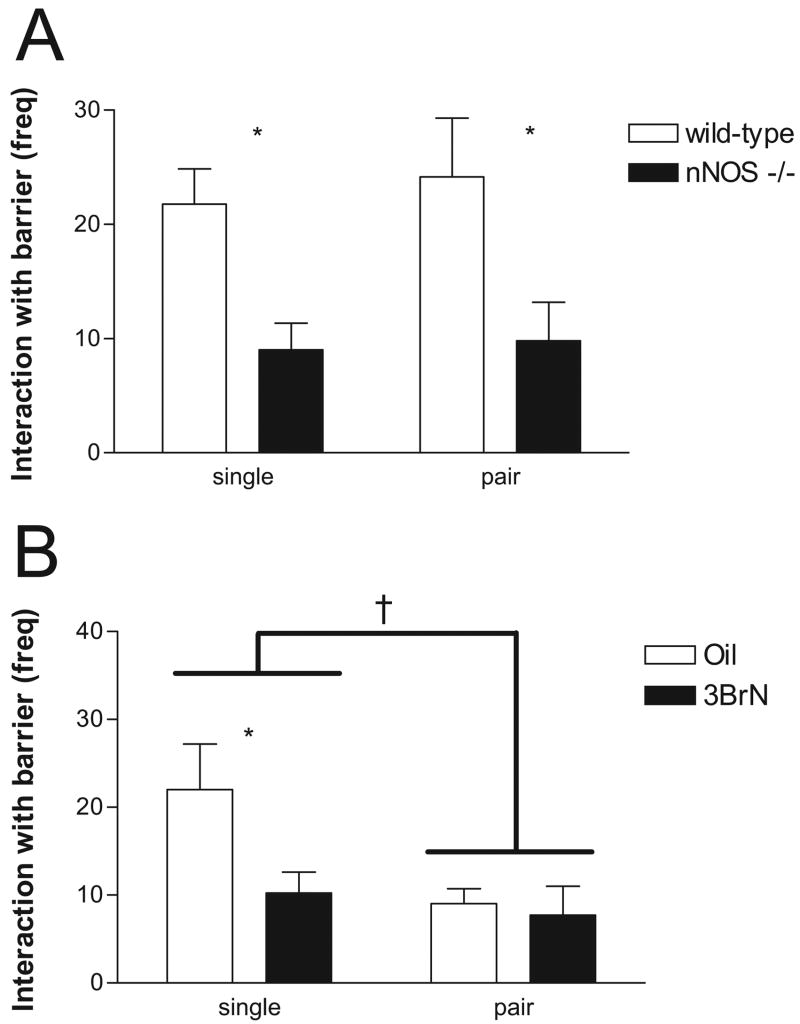Figure 1.
Behavioral responses in partition tests in the (A) knockout and (B) 3-bromo-7-nitroindazole (3BrN) studies. In the knockout study (A), wild-type mice (open bars) interacted with the barrier significantly more than did mice with selective deletion of the neuronal nitric oxide synthase gene (nNOS −/−) (black bars, *p < .05 effect of genotype). In the 3BrN study (B), there was a significant difference between 3BrN (black bars) and oil (open bars) treatment groups when mice were singly housed but not when mice were pair housed (*p < .05, effect of 3BrN). Overall, singly housed males interacted with the barrier more than did pair-housed mice (†p = .06, effect of housing). freq = frequency.

